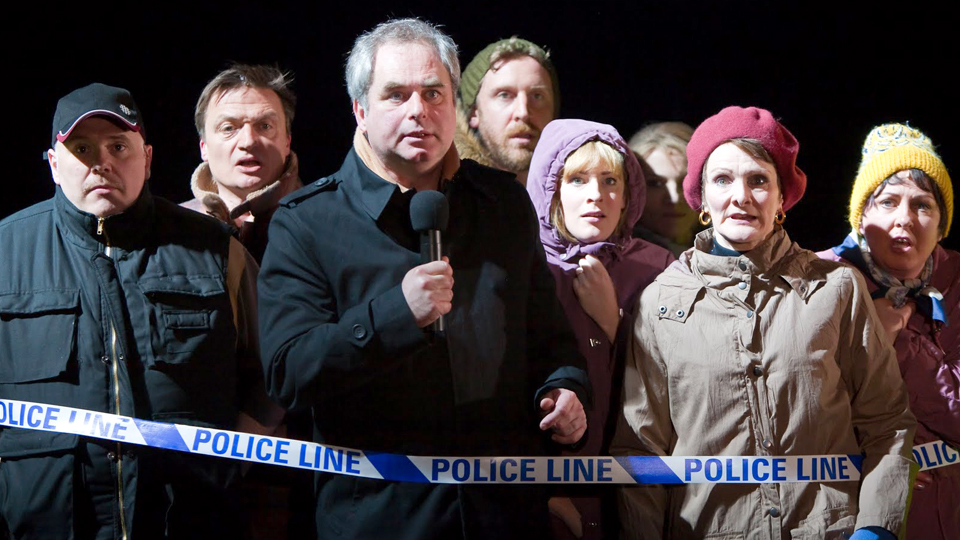London Road is unlike anything I’ve seen before. Writers Alecky Blythe and Adam Cork experiment with a technique called “verbatim theatre”, which means that actors take text collected from interviews and repeat it word for word without removing filler words, repetition, or any other slips that would have an English professor feeding your term paper to his dog. This is challenging to do effectively because actors and audience members are likely used to writing that’s edited and polished before it’s even exposed to an outside eye. Here, natural pitch and speech patterns are used and overemphasized by being set to music. While London Road isn’t exactly a Broadway-style song and dance production, the way it transforms monologue and dialogue into a musical adds variety and allows for repeated and overlapped sections of text without the cacophony that results when people talk over each other.
The story follows the inhabitants of London Road, a street in Central London where, in 2008, five prostitutes disappeared and were found dead within a few weeks of each other. Each actor plays a handful of characters, including news reporters, neighbours, police, coffee shop baristas, and worried parents. The choice of people interviewed is noteworthy—while other prostitutes share their thoughts, the families of the victims don’t, and the man who was eventually convicted for the crimes isn’t in the play.
Like the music, the technical aspects of the production seem simple but are actually complex. In the opening, one London Road resident talks about the gardening competition she helped organize to bring some joy back into the lives of those dealing with the aftermath of the murders. She specializes in hanging baskets, which, right on cue, drop from the ceiling and hang around her. People’s homes are depicted through a myriad of rolling furniture, including couches, chairs, and a TV set, which slide on and off the stage almost imperceptibly. A couple of rolling walls are used to create bars, a coffee shop, and outdoor walls. This is an effective way to show the changes in locale as people share their experiences in a wide variety of settings.
However, certain elements of the production are a little overdone. For instance, during segments involving news reports and journalists, a panel of five blue-lit screens is lowered onto the stage. This is unnecessary—no actual video footage is shown, and I don’t believe there was any possibility for confusion about the characters.
During the scenes leading up to the trials, an actor in a police jacket pulls wide blue and white ribbons from various points in the ceiling both onstage and offstage and anchors them to the floor. The ribbons form a kind of crisscross maze around the characters sitting in their living rooms, working both literally and figuratively to show the kind of quarantine regular citizens were under while police searched for the criminal.
The cast is made up of some of the best acting and singing talent Canada has to offer. While I like to see emerging artists at work, these are the professionals who grace the stages of Soulpepper and the Stratford and Shaw festivals. They know what they’re doing, and it shows. It takes a great deal of focus and skill to be able to drop in and out of characters as rapidly as these actors do, changi

